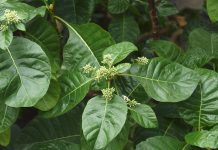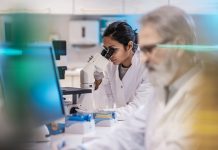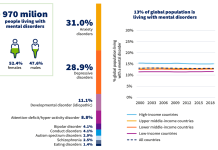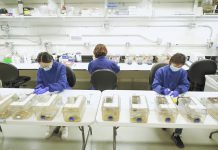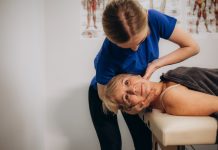Open Access Government produces compelling and informative news, publications, eBooks, and academic research articles for the public and private sector looking at health, diseases & conditions, workplace, research & innovation, digital transformation, government policy, environment, agriculture, energy, transport and more.
Home 2025
Archives
Defining Electromagnetic Hypersensitivity (EHS)
Michael Bevington, Chair of Trustees at Electrosensitivity UK, examines the history of Electromagnetic Hypersensitivity (EHS) over the past 275 years, highlighting key 18th-century discoveries and early reports of health issues related to electromagnetic fields (EMFs).
Advancing materials science: Translating innovative research to commercial prospects
Aarthi Janakiraman, Research Director of the Advanced SciTech Division at Everest Group, focuses on advancing materials science and translating innovative research into commercial opportunities.
Revolutionising indoor air quality to stop pandemics with Germicidal Ultraviolet (GUV) technology
Indoor air quality is a silent public health crisis, harbouring pathogens that contribute to billions of illnesses annually. Addressing this requires urgent attention, and Germicidal Ultraviolet (GUV) technology offers a powerful solution to combat airborne threats.
The challenge of determining the health risks of low-dose chemical exposures
Rebecca J. Wilson and Pamela J. Lein, explore whether the dose makes the poison or not. Here, they discuss the challenges of determining health risks associated with low-dose chemical exposures.
Quantitative reasoning in higher education: The 5C Model
Quantitative reasoning enhances and lengthens lives. Professor Gregory Foley of Ohio University discusses how his team is improving QR instruction in U.S. higher education.
Common data elements to advance ME/CFS research
Standardizing data collection in ME/CFS research through Common Data Elements is a crucial step toward improving diagnosis, advancing treatments, and fostering collaboration across studies to accelerate progress in understanding this complex disease.
New strategies for an old problem – Oral vaccines research
Despite their advantages, oral vaccines encounter several challenges. Professor Elizabeth Norton from Tulane University discusses how her team is addressing these issues and their research on developing and testing dmLT and saponin combination adjuvants.
A legacy of medicine and biodiversity: Protecting the cinchona tree
The endangered Cinchona officinalis, native to the Andean foothills, produced the world’s first anti-malarial drug. Augusta Cueva-Agila explains why it is crucial to conserve this species and how conservation efforts can be implemented.
The European Cancer Pulse: From data intelligence to policy action
Norbert Couespel 1 and Mark Lawler 1, 2 highlight the European Cancer Pulse, a critical tool in tracking cancer inequalities and influencing cancer policy in Europe.
Predicting cochlear implant performance: Moving beyond single biomarkers and leveraging artificial intelligence
Matthew Shew, Amit Walia, and Craig A. Buchman highlight that the significant variability in speech perception among cochlear implant users can be addressed by using a multi- faceted approach that incorporates emerging technologies like machine learning and artificial intelligence to improve outcome prediction models.
CRISPR/ Diagnostics: A portable lab for everyone
Professor Kevin J. Zwezdaryk and Chandler H. Monk discuss CRISPR and diagnostics, focusing on the development of a portable lab accessible to everyone.
Exposomics: A shift in biomedical research with potential to improve human health
Recent advances in exposomics offer an exciting opportunity to comprehensively catalog human exposures and link them to biological responses determining health and disease. Pamela J. Lein, Ph.D. from the University of California, tells us more.
Five tips to implement self-compassion for healthcare workers
Self-compassion is not a cure-all for systemic challenges within the health system, but it can enhance resilience, social support, and self-efficacy among healthcare workers, ultimately improving their quality of life in the workforce.
Solutions for better sleep
Dr Lianne Tomfohr-Madsen highlights sleep health equity research to inform best practices and policies to improve the sleep of all Canadians.
Understanding electromagnetic hypersensitivity (EHS)
Electromagnetic hypersensitivity: Michael Bevington, Chair of Trustees at Electrosensitivity UK, explains the health risks associated with exposure to radiofrequency radiation and electromagnetic fields and why more robust action is needed to protect public health.
Hormonal contraceptive designs and women’s mental health – Timing is of the essence!
Professor Belinda Pletzer from the Centre for Cognitive Neuroscience at Paris Lodron University of Salzburg explores the physical and psychological symptoms of a pill pause. She advocates for hormonal contraceptive designs that focus on women’s health needs instead of socio-cultural misconceptions about menstrual bleeding.
Mental health and self-care: A comprehensive guide
This short guide explores the importance of self-care for good mental health and provides practical tips for implementing self-care strategies.
MMPC-live: Accessible resources for phenotyping of live mouse models of diabetes and obesity
Professor Carol F. Elias, from the University of Michigan’s Department of Molecular & Integrative Physiology, discusses key research opportunities enabled by the NIDDK Mouse Metabolic Phenotyping Center in live models – MMPC-Live.
Joint manipulation, a hands-on therapeutic technique
Rob Sillevis from the Marieb College of Health and Human Services explores joint manipulation, a hands-on therapeutic technique designed to relieve pain, improve mobility, restore joint function, and enhance patient functionality.
Early intervention for eating disorders
Tracey Wade, Matthew Flinders Distinguished Professor, provides an insightful examination of the significance of brief early interventions in the treatment of eating disorders.

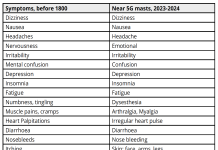

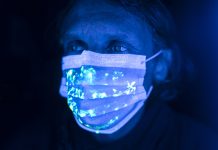


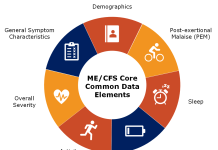
![New strategies for an old problem – Oral vaccines research Figure 1. Systemic immune responses elicited by oral dmLT-saponin combinations compared to injected vaccines (A) Cryo-electron microscopy (cryo-EM) image of the dmLT and saponin formulation demonstrating the formation of acid-stable micelle particles upon the addition of saponin to dmLT. (B) Preclinical evaluation of systemic serum IgG and IgA antibody responses following prime/boost vaccination. Antibody levels against the microbial protein antigen included in the vaccination were assessed two weeks post-final vaccination in immunized mice. Groups were stratified by vaccination route (intramuscular [IM] or sublingual [SL]) and adjuvant formulation (dmLT [D] and/or saponin [S]). Comparisons with unvaccinated controls (white bars) are shown. Statistical significance between groups is indicated (*P < 0.05), with the SL D+S group achieving the best IgG and IgA responses to vaccine antigen.](https://www.openaccessgovernment.org/wp-content/uploads/2025/01/Figure-01-218x150.jpg)
